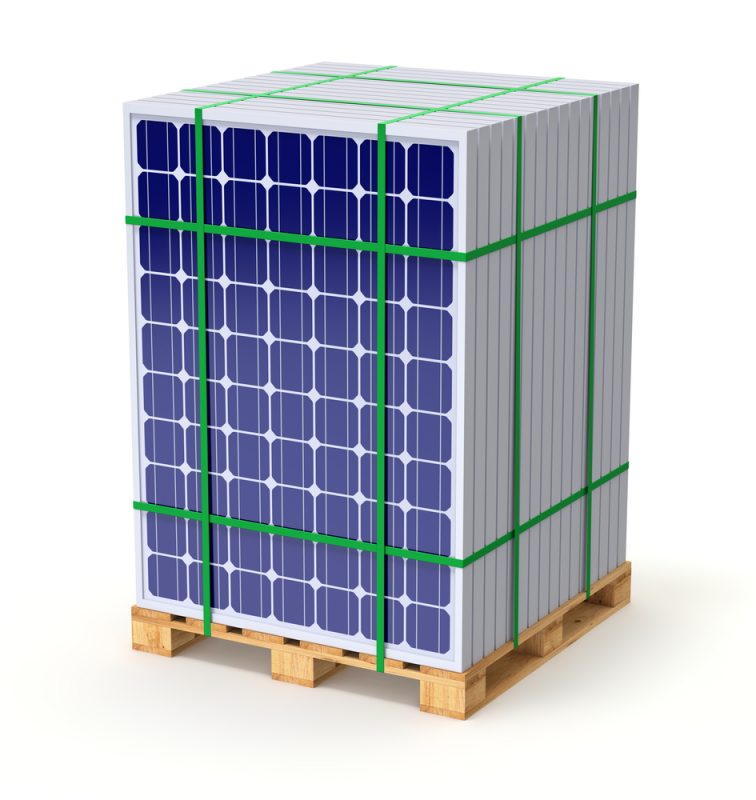Southeast Asian Solar Imports Face New US Tariffs: A Detailed Analysis

Table of Contents
The New US Tariffs: Scope and Impact
The newly implemented US tariffs target specific solar products imported from several Southeast Asian nations, significantly impacting the region's solar energy export market. These tariffs represent a substantial increase in the cost of imported solar goods, making them less competitive in the US market. This directly affects crucial components of the solar power generation system.
- Countries Affected: Vietnam, Malaysia, Thailand, and Cambodia are among the Southeast Asian countries most severely affected by these tariffs. Other nations in the region may also experience indirect consequences.
- Products Targeted: The tariffs primarily target solar panels and cells, the core components of photovoltaic systems, and also impact inverters and other related equipment. This comprehensive targeting limits the ability of Southeast Asian manufacturers to fully participate in the US solar market.
- Tariff Rates: The percentage increase in tariff rates varies depending on the specific product and the country of origin, but in many cases, it amounts to a significant increase, making Southeast Asian solar products less price-competitive compared to domestically produced or imported products from other regions.
- Estimated Financial Losses: The financial losses for Southeast Asian solar exporters are projected to be substantial, impacting both large multinational corporations and smaller manufacturers, leading to potential job losses and reduced investment in the sector. Precise figures are still being calculated, but the impact is expected to be widespread.
Underlying Causes and Political Context
The US government's decision to impose these tariffs stems from a complex interplay of factors, including allegations of unfair trade practices and broader political and economic considerations.
- Allegations of Unfair Trade Practices: The US government alleges that some Southeast Asian solar manufacturers have engaged in dumping (selling products below market value) and benefiting from unfair government subsidies, giving them an unfair advantage in the US market. These claims are being actively disputed by affected Southeast Asian governments.
- National Security Concerns: Concerns about over-reliance on foreign sources for critical technologies, including solar energy components, have also played a role in the decision to impose tariffs. This mirrors broader concerns about supply chain resilience and national security.
- Impact of the US-China Trade War: The ongoing trade tensions between the US and China, and the subsequent shift of solar manufacturing to Southeast Asia, have indirectly contributed to the current situation. The US aims to reduce its dependence on Chinese solar technology and its supply chains, leading to the targeting of Southeast Asian companies.
- Influence of US Domestic Solar Manufacturers' Lobbying Efforts: Intense lobbying efforts by US domestic solar manufacturers seeking protection from foreign competition have also likely influenced the decision-making process within the US government.
Implications for the Global Solar Industry
The consequences of these US tariffs extend far beyond Southeast Asia, impacting the global solar energy market and the broader transition to renewable energy.
- Increased Solar Panel Prices for US Consumers: The tariffs are likely to lead to increased prices for solar panels in the US, potentially hindering the growth of the domestic solar energy market and impacting the affordability of renewable energy for consumers.
- Potential Delays in Renewable Energy Projects in the US: Higher prices and potential supply chain disruptions could delay the implementation of crucial renewable energy projects, slowing down the US's progress towards its climate goals.
- Shift in Solar Manufacturing to Other Regions: The tariffs may incentivize a shift in solar panel manufacturing to other regions, such as India or some European countries, potentially altering the global landscape of solar energy production.
- Overall Impact on Global Solar Energy Market Growth: The imposition of these tariffs creates uncertainty in the global solar energy market, potentially slowing down overall growth and potentially impacting investments in renewable energy initiatives worldwide.
Responses and Potential Solutions
Southeast Asian governments and businesses are responding to the new tariffs in various ways, exploring both short-term and long-term strategies.
- Negotiations between Southeast Asian Nations and the US: Diplomatic efforts are underway to negotiate a resolution to the trade dispute, potentially involving revisions to the tariffs or the establishment of new trade agreements.
- Potential Legal Challenges to the Tariffs: Legal challenges to the tariffs are likely, potentially focusing on whether the tariffs are justified under World Trade Organization rules.
- Strategies for Diversifying Export Markets: Southeast Asian solar manufacturers are likely to seek alternative export markets to reduce their dependence on the US market and mitigate the impact of the tariffs.
- Investments in Domestic Solar Energy Manufacturing Capabilities in Southeast Asia: Increased investment in domestic solar energy manufacturing within Southeast Asia could help reduce the region's reliance on exports to the US and strengthen regional energy independence.
Conclusion
The new US tariffs on Southeast Asian solar imports present significant challenges for the region's solar industry and have broader implications for the global renewable energy transition. The immediate impact includes reduced market access, revenue losses, and potential job losses in Southeast Asia. The long-term consequences could include higher solar panel prices for US consumers, delays in renewable energy projects, and a reshaping of the global solar manufacturing landscape. It's crucial to monitor developments closely, as these tariffs represent a significant hurdle in the global effort to combat climate change through widespread adoption of renewable energy. Stay informed about future developments in US solar tariffs and their impact on the Southeast Asian solar industry and global renewable energy initiatives. Consider supporting organizations working to promote fair trade practices and sustainable energy solutions.

Featured Posts
-
 Video Replay De Loeil De Philippe Caveriviere 24 Avril 2025 Face A Philippe Tabarot
May 30, 2025
Video Replay De Loeil De Philippe Caveriviere 24 Avril 2025 Face A Philippe Tabarot
May 30, 2025 -
 Caida De Ticketmaster Que Paso El 8 De Abril
May 30, 2025
Caida De Ticketmaster Que Paso El 8 De Abril
May 30, 2025 -
 Guillermo Del Toros Frankenstein A Confusing New Tease And Its Surprising Theme
May 30, 2025
Guillermo Del Toros Frankenstein A Confusing New Tease And Its Surprising Theme
May 30, 2025 -
 Wybory Prezydenckie 2025 Czy Mentzen Zaskoczy Wyborcow
May 30, 2025
Wybory Prezydenckie 2025 Czy Mentzen Zaskoczy Wyborcow
May 30, 2025 -
 Injured Musetti Falls To Alcaraz In Monte Carlo Masters Final
May 30, 2025
Injured Musetti Falls To Alcaraz In Monte Carlo Masters Final
May 30, 2025
